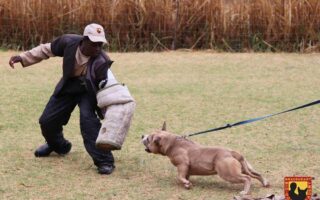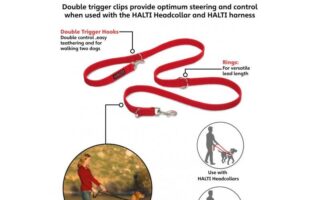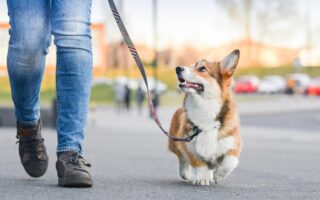Title: The Leash Chronicles: A Step Towards Adventure
Welcoming a puppy into your home is akin to adopting a little bundle of joy, energy, and boundless curiosity. As you embark on this delightful journey together, one of the first challenges to tackle is teaching your furry friend the art of walking on a leash. This seemingly simple task opens the door to a world of adventure, exploration, and bonding. Yet, for many new puppy parents, it can feel like navigating uncharted territory, with tangled leashes and enthusiastic lunges threatening to derail the experience. Fear not! In this guide, we’ll unravel the secrets of leash training, transforming those initial chaotic strolls into harmonious outings that you and your puppy can cherish. So, grab a leash, and let’s step into the world of leashed adventures together!
Table of Contents
- Understanding Your Puppy’s Leash Behavior
- Essential Equipment for Leash Training Success
- Step-by-Step Techniques for Effective Leash Walking
- Troubleshooting Common Challenges During Training
- Q&A
- Closing Remarks
Understanding Your Puppy’s Leash Behavior
When introducing your puppy to the leash, it is essential to understand various leash behaviors that may arise. Puppies often exhibit a range of reactions, from excitement to fear, all of which can influence how they walk. Some common behaviors include:
- Pulling: This is typical in eager puppies who are keen to explore their surroundings.
- Lagging: Some puppies may be hesitant and prefer to walk slowly, which might indicate insecurity.
- Jumping: A high-energy response to the presence of other dogs or people, often due to excitement or anxiety.
To effectively teach your puppy how to walk confidently on a leash, it’s crucial to redirect and reinforce positive behavior. Consider implementing the following techniques:
| Technique | Description |
|---|---|
| Reward-Based Training | Use treats to encourage your puppy to stay by your side. |
| Short Sessions | Keep walks brief initially to maintain your puppy’s focus. |
| Consistent Commands | Use the same verbal cues to guide your puppy’s behavior effectively. |
Essential Equipment for Leash Training Success
- Fitted Collar or Harness: Choose a comfortable, adjustable collar or a harness that fits snugly but isn’t too tight. A harness is generally recommended for puppies, as it distributes pressure across their body and helps prevent neck injuries.
- Leash: Opt for a lightweight, non-retractable leash that is around 4 to 6 feet long. This length gives you control while allowing your puppy enough freedom to explore.
- Treats: Use small, tasty treats to reward your puppy for good behavior during walks. This will reinforce positive associations with wearing the leash and being outdoors.
- Clicker: If you’re practicing positive reinforcement training, a clicker can be a valuable tool. It helps to mark the desired behavior immediately, making it clear to your puppy that they’ve done something correct.
- Patience and Consistency: Ensure that everyone in your household is on the same page regarding training methods. Consistent handling of the leash and approach will make the learning process smoother for your puppy.
| Essential Gear | Purpose |
|---|---|
| Collar or Harness | Safety and Control |
| Leash | Guidance |
| Treats | Motivation |
| Clicker | Positive Reinforcement |
| Patience and Consistency | Effective Training |
Step-by-Step Techniques for Effective Leash Walking
To initiate the leash walking process, start by allowing your puppy to get accustomed to wearing a collar and leash. This can be done by letting them wear it for short periods while engaging in play or during mealtimes. Ensure the collar fits snugly but comfortably, and the leash should be lightweight for easy handling. After your puppy is accustomed to the gear, introduce short sessions of walking indoors where there are minimal distractions. Use treats and praise generously to encourage your puppy to walk beside you, reinforcing the behavior you want to achieve.
As your puppy begins to understand leash walking, gradually increase the length of your walks and introduce them to different environments. Pay attention to their body language, and if they seem overwhelmed or distracted, take a step back and allow them to explore. A consistent method for keeping your puppy engaged includes:
- Using positive reinforcement: Reward desirable behavior with treats and affection.
- Keeps walks short initially: Focus on quality rather than quantity to prevent fatigue or frustration.
- Practicing ‘stop and go’: Teach your puppy to stop walking when you do, rewarding them for staying close.
- Avoiding pulling: If your puppy pulls ahead, come to a stop and only proceed when the leash is slack.
| Dos | Don’ts |
|---|---|
| Start in a quiet area | Rushing into crowded places |
| Use treats as motivation | Using harsh corrections |
| Practice patience | Expecting perfect behavior right away |
Troubleshooting Common Challenges During Training
Training a puppy to walk on a leash can present several challenges, but understanding how to address them effectively can lead to a smoother experience. One common issue is excessive pulling, which can be frustrating for both the puppy and the owner. If your puppy is constantly tugging on the leash, try implementing the following strategies:
- Use treats as motivation: Reward your puppy with treats when they walk beside you at a relaxed pace.
- Stop-and-go technique: Whenever your puppy pulls, stop walking and wait until they return to your side before resuming.
- Choose the right equipment: Consider a harness or a head collar designed to minimize pulling.
Another frequent obstacle is distractions from the environment, which can cause your puppy to lose focus during walks. To manage this, it is essential to prepare your puppy for different stimuli in a controlled environment. Here are some approaches:
- Gradual exposure: Start training in a quiet area before progressing to busier streets.
- Practice commands: Reinforce basic commands like “sit” and “stay” to regain your puppy’s attention when they become distracted.
- Positive reinforcement: Use praise and rewards whenever your puppy responds to your commands despite distractions.
| Challenge | Solution |
|---|---|
| Excessive Pulling | Use treats and stop-and-go technique |
| Distractions | Gradual exposure and positive reinforcement |
Q&A
Q&A: Teaching Your Puppy to Walk on a Leash
Q1: Why is it important to teach my puppy to walk on a leash?
A: Teaching your puppy to walk on a leash is essential for their safety and socialization. A well-trained puppy can enjoy outdoor experiences without the risk of running off or becoming overwhelmed. Leash training also strengthens the bond between you and your pet, making walks a pleasurable and controlled experience.
Q2: What age should I start leash training my puppy?
A: You can start leash training as early as 8 weeks old. At this age, puppies are eager to explore, and introducing them to the leash can help them acclimate to it quickly. Early training can set the groundwork for good leash manners as they grow.
Q3: What type of leash and collar should I use?
A: Choose a lightweight collar that fits snugly but is not too tight. A standard leash that is 4 to 6 feet long is ideal for training. Avoid retractable leashes initially, as they can create bad habits and make controlling your puppy more difficult during training.
Q4: How do I introduce my puppy to the leash?
A: Start by allowing your puppy to sniff and interact with the leash while you’re in a familiar environment. Once they seem comfortable, gently attach it to their collar and let them walk around with it. Keep the initial sessions short and positive to avoid overwhelming them.
Q5: What are some techniques to encourage proper leash walking?
A: Use positive reinforcement by rewarding your puppy with treats and praise when they walk calmly beside you. If they pull, stop walking until they return to your side. This teaches them that they can only move forward when they stay close to you. Consistency is key!
Q6: My puppy keeps biting the leash. How should I handle this?
A: If your puppy bites the leash, redirect their energy by offering a toy or engaging them in a game instead. Avoid tugging on the leash, as this might encourage the behavior. Work on teaching them the “leave it” command to help them understand that the leash is off-limits.
Q7: How can I make leash training an enjoyable experience for my puppy?
A: Incorporate play and exploration into your walks. Allow your puppy to sniff new smells, and change your walking routes occasionally to keep things exciting. Using high-value treats can also motivate them to walk nicely while reinforcing positive behavior.
Q8: How long will it take for my puppy to learn to walk on a leash?
A: The timeline varies for each puppy, but patience is vital. Some may catch on within a few sessions, while others may take weeks. Regular, short training sessions coupled with lots of encouragement and play will yield the best results. Celebrate small milestones along the way!
Q9: Any tips for walking in public places?
A: Start in quiet areas before venturing into busy environments. Gradually expose your puppy to more distractions while reinforcing good leash behavior. Stay calm and confident while walking, as your demeanor can influence your puppy’s comfort level in new situations.
Q10: What if I encounter difficulties during leash training?
A: If you’re facing challenges, take a step back and reassess your approach. Consult training resources, consider enrolling in a puppy class, or seek advice from a professional dog trainer. Remember, every puppy learns at their own pace, so persistence and positivity are essential components of successful training!
Closing Remarks
teaching a puppy to walk on a leash is more than just a task; it’s the beginning of an exciting journey that strengthens the bond between you and your furry friend. With patience, consistency, and a sprinkle of enthusiasm, those early awkward attempts will blossom into graceful strolls filled with exploration and adventure. Remember, every step forward is a victory, and every training session is an opportunity for growth and connection. As you guide your puppy through this new experience, you’ll be laying the foundation for countless memories together on the open road, from neighborhood wanderings to serene park strolls. So, grab that leash, embrace the process, and let the adventures unfold—after all, every great journey begins with a single step!



